
Since international travel on pause, people have turned to exploring their own backyards. From the U.S. to Canada to England, Europe, and New Zealand, people are becoming in cars, campervans, and RVs and heading out on road trips. After all, it allows you to social distance while still getting outside!
Today, I’ve invited my friends Mike and Anne from HoneyTrek to share their RV tips and advice. They’re full-time RVers and can assist you get your next RV adventure started easily and on a budget!
A couple of years back, the van life craze had everyone interested by rubber-tramping across North America. Maybe you thought, nah, I prefer my city apartment or jet-setting abroad.
Then COVID-19 hit. All of a sudden, getting out of Dodge with a house on wheels began to sound specialized , didn’t it?
There is little question that RVing is one among the simplest and safest ways to travel immediately . No crowded planes or questionable hotel rooms required — an RV gives you the liberty to explore and therefore the peace of mind of getting your own space.
Over the course of our eight-year “HoneyTrek” we’ve tried virtually every sort of travel — backpacking, house-sitting, small-ship cruising, backcountry camping, five-star honeymooning, etc. — but the day we rented a campervan in New Zealand, we knew this was our preferred mode of travel.
For the past three years, we’ve been traveling full-time in our 1985 Toyota Sunrader “Buddy the Camper,” from the Baja Peninsula to the Arctic Circle and 47 states in between.
We’ve learned tons along the way and are excited to share what we expect are the foremost important things to understand before beginning on your RV journey.
Here’s a video we just filmed which covers all the fundamentals (or read the post below):
How to Pick the proper Size RV
For maximum adventure and luxury , we’d recommend a camper around 21 feet long. we all know those big RVs tricked out sort of a penthouse apartment look tempting, but remember that each foot long costs mobility. A shorter rig allows you to:
Access rugged terrain
Fit in a traditional parking lot , even parallel park
Avoid length restrictions on a number of America’s most beautiful winding roads and ferry rides
Get better mileage (Most rigs get 6–10 MPG. Ours gets 19.)
Have less stuff to interrupt , which suggests longer exploring and having fun!
And, while even shorter 16- to 19-foot-long campervans do have the last word mobility, there are a couple of belongings you should know before you fall for that adorable Westfalia or stealthy Sprinter.
First, life ain’t so pretty without your own indoor shower and toilet . And, while we respect the vanlifers who cope with public restrooms, bucket toilets, and catholes (digging a hole outside once you got to attend the bathroom), allow us to tell you the virtues of getting a flushing loo: privacy, cleanliness, and autonomy.
We can be during a city centre or a protected conservation area and conveniently and responsibly stay the night. In these unprecedented times, it’s more important than ever to be self-sufficient and not believe shared facilities.
Besides a toilet , a 19- to 22-foot long RV is large enough to also offer you a correct bed and ample storage while still being sufficiently small to explore with wild abandon.
How to Get Power (A.K.A. the Virtues of Solar)
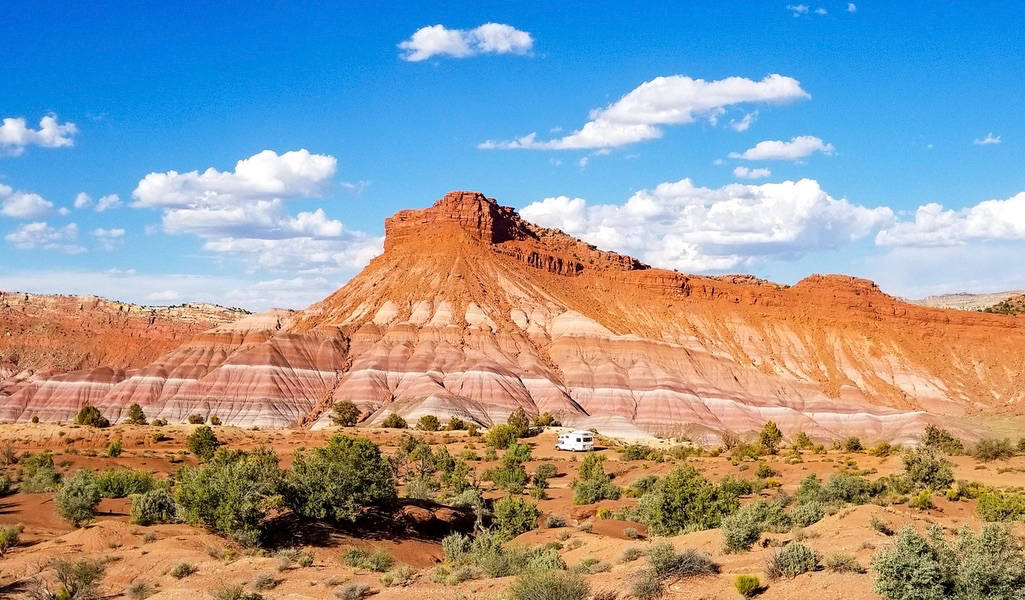
Mike and Anne from HoneyTrek boondocking in Pariah Canyon, USA
RVs and campers have a house battery to run the lights, pump , fans, and power electronics. Here are the varied thanks to keep it charged:
Drive a couple of hours per day
Pay to connect at a campground
Run a generator
Have solar panels
Your average road trip will likely offer you enough charge from driving, but if you actually need power, an RV park isn't distant . If you're looking to slow-cruise the wilderness and lower your environmental impact, solar panels are a requirement . the only and most affordable option ($70–150 USD) is to urge a transportable panel and use it whenever you’re stopped so as to agitate the house battery of your RV. This obviously isn’t as convenient or powerful as an integrated system, but it should be enough to stay your phone and laptop charged.
If you're during this for the end of the day , though, you’re getting to want to put in a system . We bought 300 watts of flexible monocrystalline solar panels, installed them to the roof, and wired all of them along side a charge controller, lead-acid accumulator , and power inverter in about 20 hours — all for $1,200 USD.
If you would like the simplest efficiency and lifespan, spring for a lithium-ion deep cycle battery, just like the Relion RB100. If a DIY electrical project sounds too scary, you'll have it professionally installed for $1,000–2,000 USD. we all know that’s may be a chunk of change, but investing in solar has allowed us to spend the last three years without having to ever buy electricity, worry about running out of power, or generating any greenhouse gases.
How to Get Internet
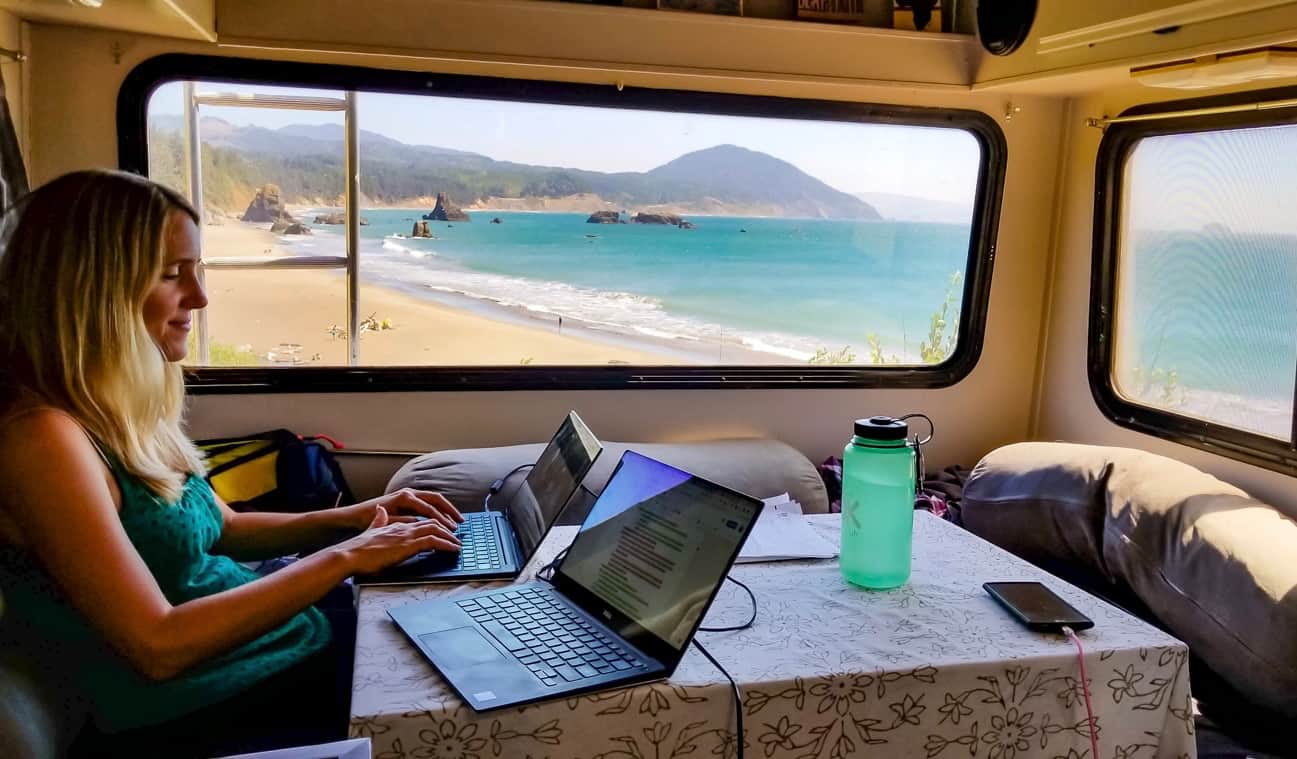
Anne from HoneyTrek performing on a laptop in her RV
Your smartphone is your on-the-go router. It’s important to use a carrier with an in depth national network (AT&T or Verizon) so on get reception in remote areas (the dream is to be using your laptop from a secluded beach, right?).
We use our Verizon phone as a hotspot for our two laptops, getting 50GB unthrottled per month, plus unlimited calls and texts, for $109 USD.
While that’s an honest amount of knowledge , it’s not a home internet plan through which you'll be streaming all day. If you’ll get on the road for quite a few weeks, monitor your usage with the GlassWire app and install NetLimiter on your laptop to assist ration your data. Save your big downloads and uploads for free of charge Wi-Fi zones.
We love performing at libraries, not only for the web except for their inspiring spaces, peace and quiet, community offerings, and open invitation to remain all day.
And, when all else fails, McDonald’s and Starbucks have wifi that’s usually strong enough to tap from the comforts of your camper.
How to Find Places to Camp
Your basic campground typically offers a flat parking spot with a picnic table, fire pit, and shared bathroom for $10–30 USD per night. If you raise to $35–80 USD an evening , you’re in RV park territory and can likely get power, water, sewer, and shared amenities sort of a clubhouse and a pool.
But did you recognize there are tens of thousands of free campsites scattered round the wilds of the USA? The federal has reserved 640 million acres of public lands (national forests, BLM [Bureau of Land Management] land, national conservation areas, etc.) for your enjoyment. These sites are pretty bare-bones (sometimes it’s just a clearing within the forest) but, since we've a self-contained camper with our own beverage and toilet , all we actually want may be a peaceful spot with an honest view.
This sort of independent camping has many names: dispersed camping, wild camping, dry camping, freedom camping, and most ordinarily “boondocking.” we discover our favourite boondocking spots via the last word Campgrounds app, which we use to ascertain what sites are nearby.
If we’re striking out thereon app, we address iOverlander and FreeCampsites.net.
With these apps, we’re ready to find great camping on the fly and infrequently pay a dime.
That said, there's a time and place for more traditional campgrounds. they will be an excellent thanks to meet other campers, enjoy a couple of extra services, or stay within the heart of a park . ReserveAmerica.com is that the main campground portal (290,000 listings!) for public (national and state parks) and personal campgrounds. HipCamp.com also has extensive offerings and is our favourite for unique sites on private land — it’s just like the Airbnb of camping. KOA has plenty of options too.
If you recognize there's a particular place you would like to get on a selected night, you'll book beforehand . But also just don’t be afraid to travel with the flow — there's always a gorgeous boondocking spot somewhere!
Urban Boondocking
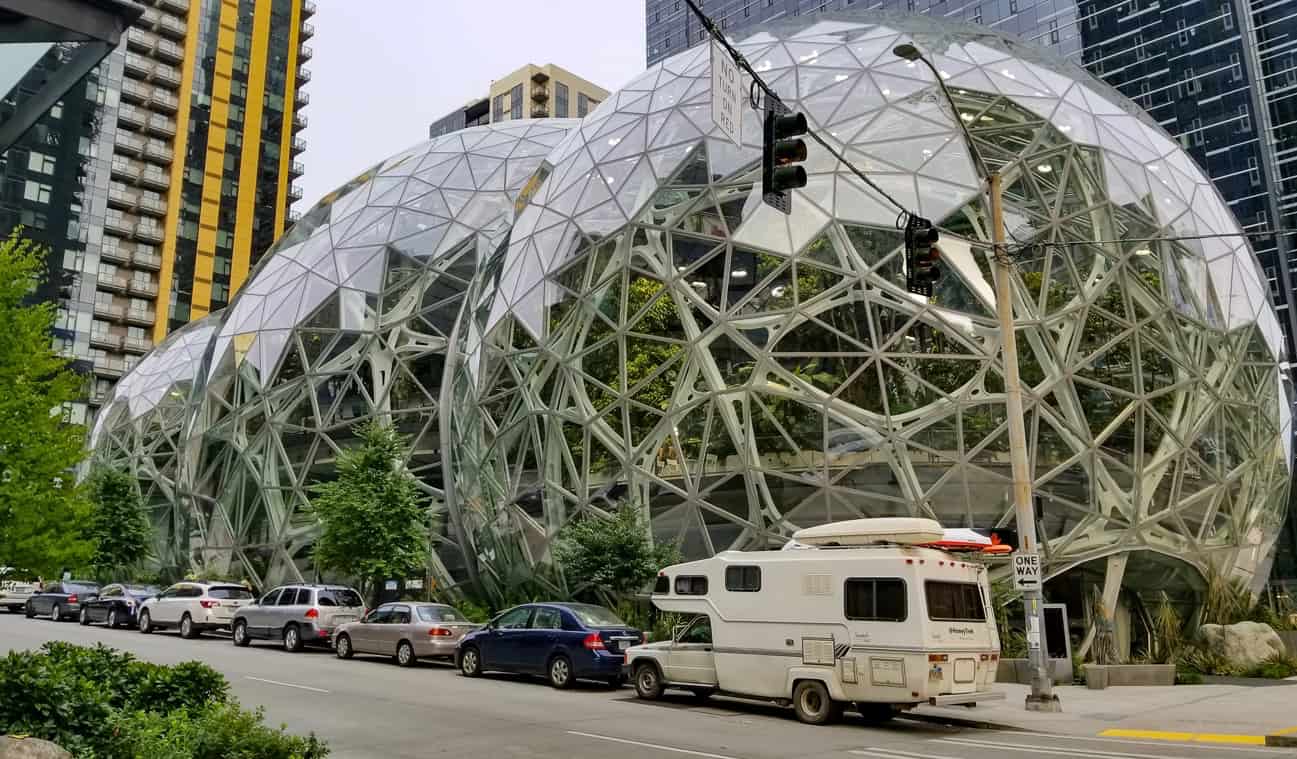
Mike and Anne from HoneyTrek boondocking in Seattle, USA
Speaking of boondocking, it’s not only for the woods. we've spent countless nights “camping” within the heart of cities, and if you adhere to a couple of simple rules, you'll feel confident doing the same:
Obey all street signs and curb markings and keep the meter fed. If it says “no overnight parking,” listen . If there's any ambiguity within the signage (street cleaning conflicts, permit parking, etc.), find another spot.
Don’t overstay your welcome. We usually limit our time within the same parking spot to 2 nights.
Don’t draw attention to yourself with excessive lights, music, noise, etc. albeit our 1980s RV is way from a stealth camper, we've slept in over 50 cities and never been asked to “move along.”
Be smart, be respectful, and therefore the world is your campground.
How to economize on Gas
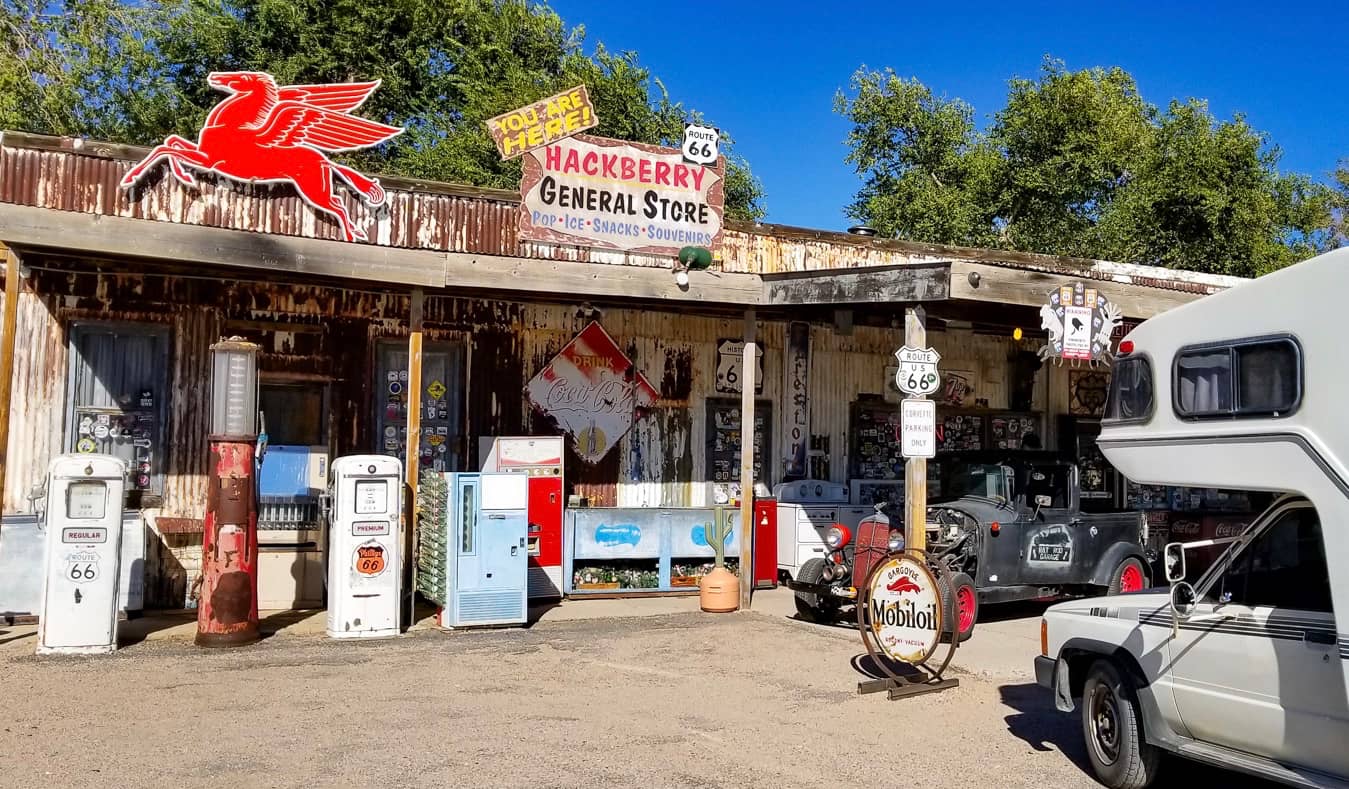
Mike and Anne from HoneyTrek parked at alittle country store
We know gas is merely around $2 USD/gallon at the instant , but when it involves your long-term travel budget, equally counts. Here are some tips to save lots of at the pump:
Get the GasBuddy app. It allows you to ascertain the gas prices along your route, often saving upwards of fifty cents per gallon, particularly if you'll wait to cross a state boundary or get farther off the highway.
Get yourself a Discover card and/or Chase Freedom Unlimited card; certain months of the year, they provide 5% off your fill-up.
Sign up for gasoline station rewards programs, especially Shell and Pilot, which give 3–5 cents off per gallon.
Keep your tires inflated at the recommended PSI, and drive under 55mph. additionally to the gas savings, it’s safer and prolongs the lifetime of your rig.
How to Find the rear Roads

Mike and Anne from HoneyTrek within the Black Hills
Set your GPS to “avoid highways” and you’ll discover just how beautiful this country are often . Interstates have blazed straight lines across the state but the old network of roads, working with the contours of the land and connecting historic towns, still exists.
The best routes are America’s Byways, a set of 150 distinct and diverse roads protected by the Department of Transportation for his or her natural or cultural value.
Even better than that website (because you can’t believe back roads’ cell reception) may be a text of the National Geographic Guide to Scenic Highways and Byways. It maps out the prettiest drives in every state, with something to marvel at even in “the flyover states.” We ask it whenever we start an enormous drive and find out interesting landmarks, quirky museums, scenic viewpoints, quintessential eateries, and short hikes, which always improves the ride.
Take Glamping Breaks
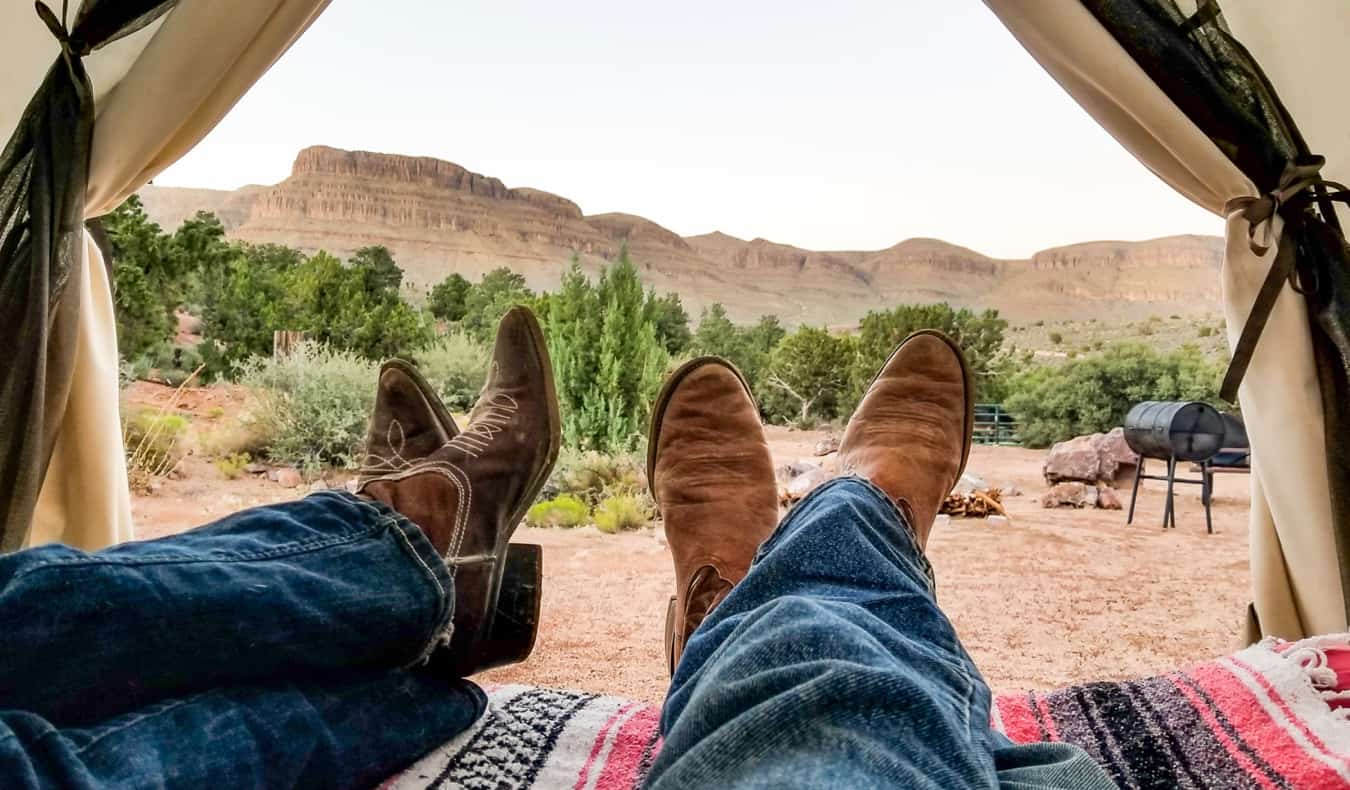
Mike and Anne from HoneyTrek glamping within the desert
To make sure you don’t blow out on small-space, off-grid living, treat yourself to the occasional glamping getaway. Creative outdoor accommodations with an opulent bed, hot shower, and friendly host always remind us what proportion we love the woods.
When we get to a glamp camp, we will walk off from our normal responsibilities (setting up camp, cooking for ourselves, and DIY everything) and truly relax. a stunning treehouse, dome, yurt, or safari tent has been designed together with your enjoyment in mind, and if you would like anything, your host is at the ready.
A little pampering and fresh combat the outside will offer you the energy to stay on truckin’.
To find fabulous getaways along your route, inspect our glamping book, Comfortably Wild: the simplest Glamping Destinations in North America.
For Booking and Details:-
Travel Tips:-
Tours & activities:-
Accommodations:-
Check out Strikingly, the easiest website builder:-
Get your Joomla and WordPress hosting :-



0 Comments